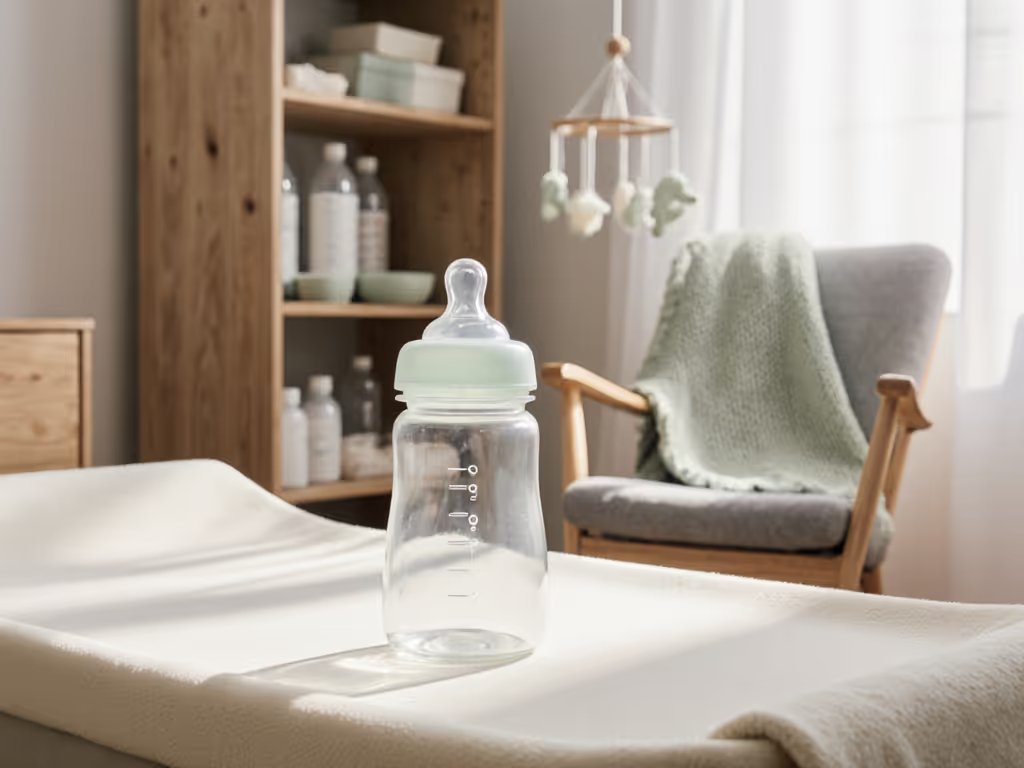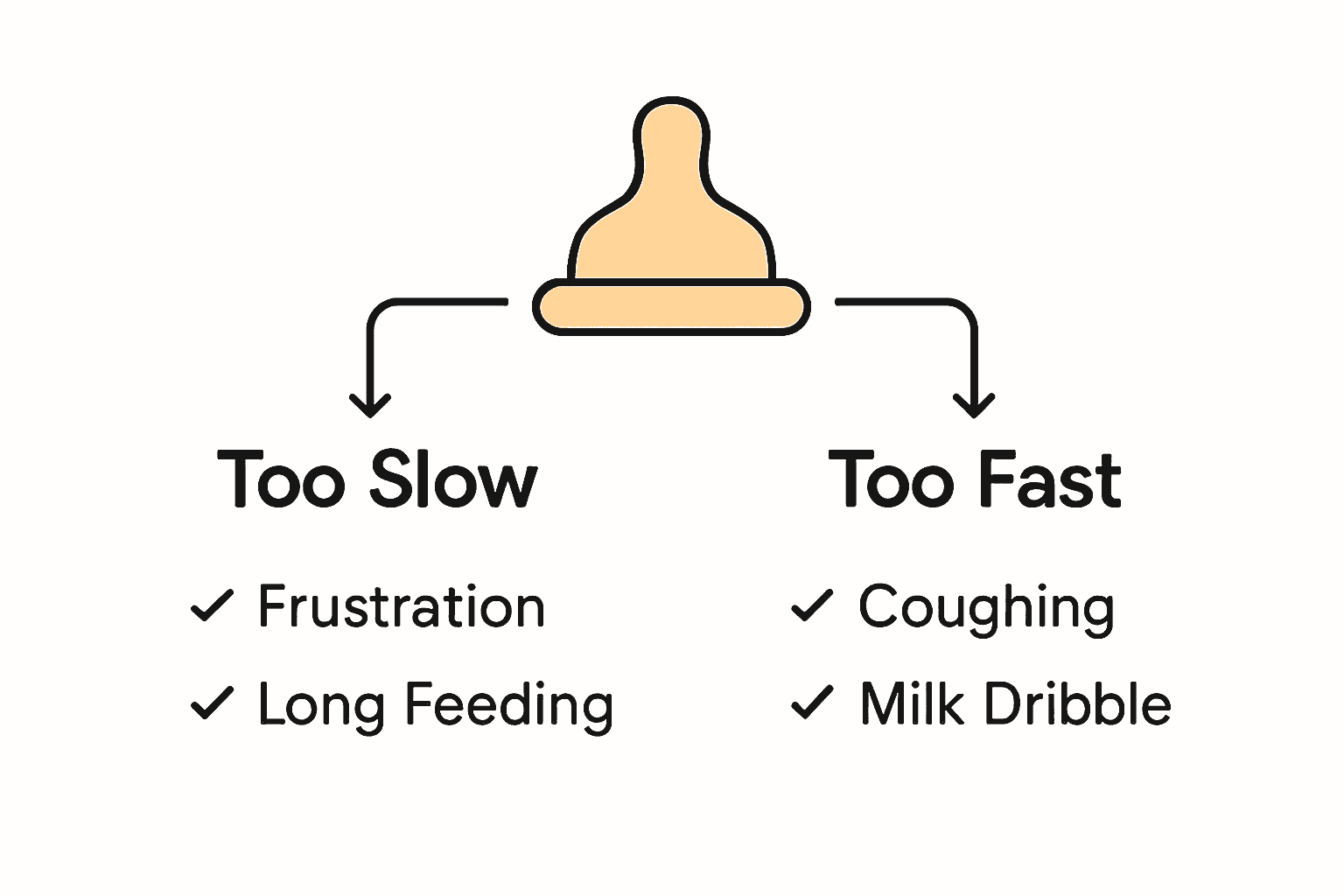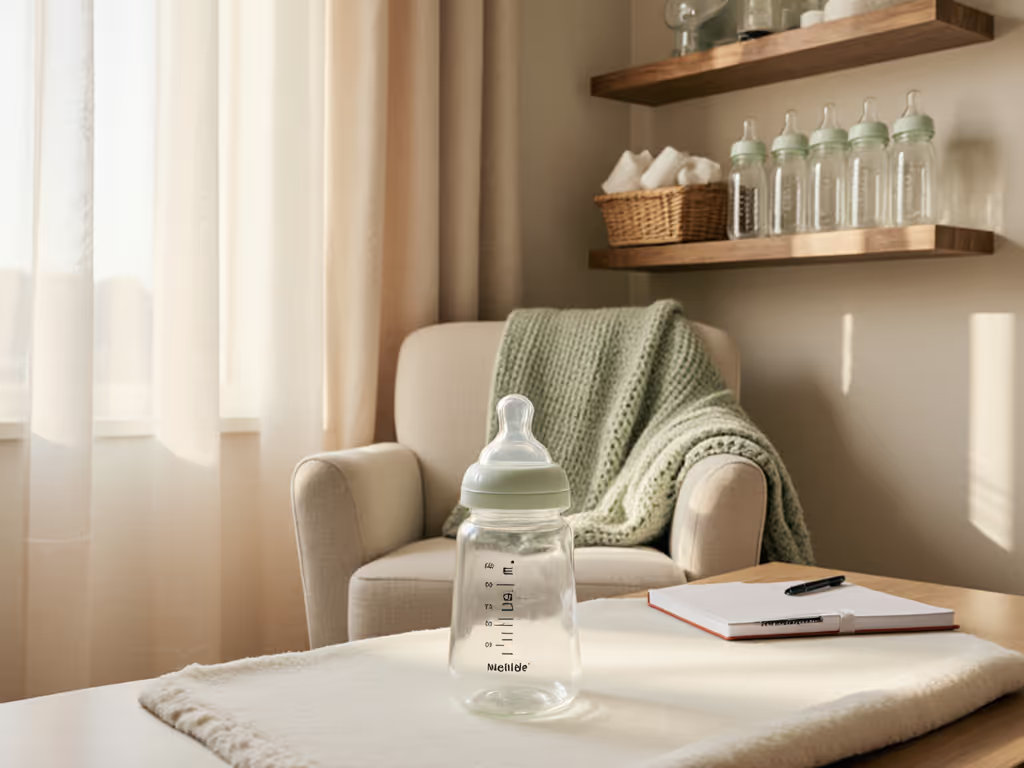
What Is Nipple Flow? Complete Parenting Guide

Did you know that improper bottle nipple flow can cause up to 40 percent of babies to experience feeding challenges? Many parents overlook nipple flow, yet it directly impacts how well your baby feeds and feels during each meal. Finding the right flow isn't just about comfort, it's vital for safety and healthy growth. The right choice helps prevent exhaustion, frustration, and even choking, setting your baby up for happier, more successful feeding moments.
Key Takeaways
| Point | Details |
|---|---|
| Importance of Nipple Flow | Proper nipple flow is essential for safe and comfortable feeding, affecting a baby's ability to suck, swallow, and breathe. |
| Age-Based Recommendations | Nipple flows vary by brand and should be selected based on the baby's developmental stage, with specific flows for newborns through older infants. |
| Signs of Flow Mismatch | Indicators such as excessive coughing, feeding frustration, or prolonged feeding time signal that a change in nipple flow may be necessary. |
| Flexibility in Selection | Observing your baby's feeding cues and being ready to adjust flow based on their unique needs ensures a better feeding experience. |
Defining Nipple Flow And Why It Matters
When you're feeding your baby, the speed at which milk moves through a bottle's nipple can make all the difference. Nipple flow is essentially the rate at which liquid travels from the bottle into your baby's mouth during feeding. Think of it like a carefully calibrated highway where milk travels - too slow, and your baby works overtime; too fast, and they're suddenly dealing with a milk rush they can't manage.
Understanding nipple flow matters because babies have unique developmental stages that require different feeding speeds. The wrong flow rate can lead to several potential issues:
- Exhaustion: When flow is too slow, babies expend significant energy trying to extract milk
- Choking Risk: Rapid flow can overwhelm their ability to coordinate sucking, swallowing, and breathing
- Feeding Frustration: Inappropriate flow can cause babies to reject bottles or become upset during feeding
Research from Nationwide Children's Hospital highlights that bottle flow rates vary significantly across brands. What one manufacturer labels as a "slow" nipple might actually have a surprisingly different flow speed compared to another brand's "slow" nipple. This inconsistency makes it crucial for parents to understand and test nipple flow carefully, ensuring it matches their baby's age, sucking strength, and developmental stage.
Types Of Nipple Flows And Age Recommendations
Baby bottle nipples aren't a one-size-fits-all solution. Nipple flow rates are carefully designed to match your baby's developmental stages, ensuring they can feed comfortably and safely. As babies grow, their ability to suck, swallow, and breathe becomes more coordinated, which means their nipple flow needs change too.
Typically, nipple flows are categorized into several standard ranges:
- Preemie/First Flow (0): Designed for premature infants or newborns with minimal sucking strength
- Newborn Flow (1): Ideal for babies 0-3 months, offering the slowest standard milk release
- Slow Flow (2): Recommended for babies 3-6 months as they develop stronger sucking muscles
- Medium Flow (3): Suitable for babies 6-9 months who can manage faster milk transfer
- Fast Flow (4): Appropriate for babies 9+ months with advanced feeding skills
Take the Philips Avent system as an example. Their nipple design progression mirrors typical infant development, with each flow level thoughtfully engineered to support a baby's changing nutritional and feeding capabilities. Parents should watch for signs that their baby might need a flow change - such as frustration during feeding, taking longer than 20 minutes to finish a bottle, or showing signs of working too hard to extract milk.
Remember, while age recommendations provide guidance, every baby develops differently. Pay attention to your baby's unique feeding cues and be prepared to adjust nipple flow as needed.

Here's a comparison of standard nipple flow rates and their recommended ages:
| Flow Level | Typical Age Range | Key Features |
|---|---|---|
| Preemie/First (0) | Premature/Newborn | Minimal flow<br>For weak suck<br>Lowest milk rate |
| Newborn (1) | 0-3 months | Slowest standard<br>Gentle flow<br>For new feeders |
| Slow (2) | 3-6 months | Slightly faster<br>For developing suck<br>Reduces effort |
| Medium (3) | 6-9 months | Moderate flow<br>Suits improved skills<br>Faster milk transfer |
| Fast (4) | 9+ months | Quickest release<br>For strong, skilled feeders |
How Nipple Flow Affects Feeding Experience
The right nipple flow is like finding the perfect rhythm for your baby's feeding dance. Too slow, and your little one becomes a frustrated musician struggling to play; too fast, and they're overwhelmed by a sudden symphony of milk they can't control. Research from Nationwide Children's Hospital reveals that inappropriate flow rates can dramatically impact your baby's entire feeding experience.
When the nipple flow doesn't match your baby's developmental stage, several challenges emerge:
- Physical Exhaustion: A too-slow flow requires excessive sucking effort, causing baby to tire quickly
- Feeding Stress: Babies might become upset, pulling away from the bottle or refusing to feed
- Digestive Discomfort: Inconsistent flow can lead to air swallowing, potentially causing gas and colic
- Potential Choking: Rapid flow can overwhelm a baby's ability to coordinate sucking, swallowing, and breathing
Experts note that flow challenges aren't just about speed - they're about comfort and safety. The wrong nipple flow can transform feeding from a nurturing experience into a stressful event for both baby and parent. Some babies might show clear signs of flow mismatch: excessive coughing, milk dribbling from the mouth, or taking unusually long or short times to finish a bottle.
The key is observation and flexibility. Watch your baby's feeding cues, be willing to experiment with different nipple flows, and remember that what works perfectly one month might need adjustment the next. Your baby's comfort and ease during feeding are the ultimate indicators of the right nipple flow.
Signs Of Flow Mismatch And Practical Troubleshooting
Navigating nipple flow challenges can feel like solving a complex puzzle, but understanding your baby's feeding signals makes troubleshooting much easier. Babies communicate their discomfort through specific behaviors that directly indicate whether the current nipple flow is working for them or causing frustration.
Here are the key signs of flow mismatch to watch for:
-
Too Slow Flow Indicators:
- Baby sucks aggressively and seems exhausted
- Feeding takes longer than 30 minutes
- Visible frustration during feeding
- Flattening or collapsing the nipple while sucking
- Constant pulling away from the bottle
-
Too Fast Flow Indicators:
- Frequent coughing or choking
- Milk dribbling from mouth corners
- Struggling to coordinate swallowing
- Refusing the bottle after a few sucks
- Apparent discomfort or distress during feeding
Practical troubleshooting requires careful observation and systematic approach. If you notice persistent flow issues, start by making small, incremental changes.
 For slower flows, consider moving up one nipple size; for faster flows, step back to a slower nipple. Always monitor your baby's response and be prepared to adjust quickly.
For slower flows, consider moving up one nipple size; for faster flows, step back to a slower nipple. Always monitor your baby's response and be prepared to adjust quickly.
Remember, every baby is unique. What works perfectly for one might not work for another. Trust your parental instincts, pay attention to your baby's cues, and don't hesitate to consult your pediatrician if feeding challenges persist.
Tips For Choosing The Right Nipple Flow
Choosing the right nipple flow is more art than science, requiring a delicate balance of manufacturer guidelines, your baby's unique development, and careful observation. While age-based recommendations provide a starting point, they're not a rigid rulebook - your baby's individual feeding behaviors are the true compass.
Here are strategic tips for selecting the perfect nipple flow:
- Start Conservative: Begin with the slowest flow possible for your baby's age
- Watch Feeding Dynamics: Observe how easily or difficultly your baby feeds
- Consider Feeding Type: Breastfed babies often do best with slower flows
- Be Responsive: Be ready to switch nipple sizes based on baby's cues
- Check Consistency: Factor in formula or breast milk thickness when selecting flow
Specific signals that suggest it might be time to change nipple flow include persistent feeding frustration, taking more than 30 minutes to complete a bottle, or showing signs of working too hard to extract milk. For breastfed babies transitioning to bottles, experts recommend extra caution - introducing a flow that's too fast can cause nipple confusion and feeding challenges.
Remember, nipple flow isn't a one-time decision. What works this month might need adjustment as your baby grows and develops stronger feeding skills. Stay attentive, trust your instincts, and don't be afraid to experiment gently to find the perfect feeding rhythm for your little one.
Find the Perfect Nipple Flow Match for Your Baby—Start Confidently Today
Struggling to decode nipple flow and watching your baby become upset or tired at every feeding can be overwhelming. Many parents face the exact same challenges described in our guide: exhaustion from slow flows, choking concerns when milk moves too quickly, and the frustration of seeing your little one refuse the bottle. You want a calm, safer, and more predictable feeding routine. At Family Bottle Fit, we offer expert strategies and data-based tools that take the guesswork out of choosing and matching nipples, bottles, and materials for your baby's unique needs.
Stop second-guessing your choices. Visit Family Bottle Fit's main page to explore smart bottle comparisons, at-home nipple flow checks, and proven tips to resolve flow mismatches. Take the first step toward stress-free feeding—discover personalized solutions and create a smoother experience for both you and your baby today.
Frequently Asked Questions
What is nipple flow and why is it important for feeding?
Nipple flow refers to the rate at which liquid travels from a bottle's nipple to a baby's mouth during feeding. It's important because the right flow helps prevent issues such as exhaustion, choking, and feeding frustration that can arise if the flow is too slow or too fast for the baby's developmental stage.
How do I know which nipple flow to choose for my baby?
Nipple flows are categorized based on age and developmental stages. Start with the slowest flow recommended for your baby's age, and observe their feeding cues. Signs such as frustration or excessive effort may indicate a need for a different flow level.
What are the signs of nipple flow mismatch during feeding?
Signs of nipple flow mismatch include excessive sucking and fatigue (too slow flow) or coughing, choking, and dribbling milk (too fast flow). If you observe these behaviors, consider adjusting the nipple size to better match your baby's feeding abilities.
How often should I reassess my baby's nipple flow needs?
You should regularly reassess your baby's nipple flow, especially as they grow and develop stronger feeding skills. Changes in feeding dynamics, such as taking longer than 30 minutes to finish a bottle or showing signs of frustration, can indicate it's time to switch to a different nipple flow.
Related Articles


Why Slow Flow Nipples Matter: Complete Guide

Step-by-Step Guide to Preventing Nipple Confusion Easily

Complete Guide to the Role of Bottle Construction


